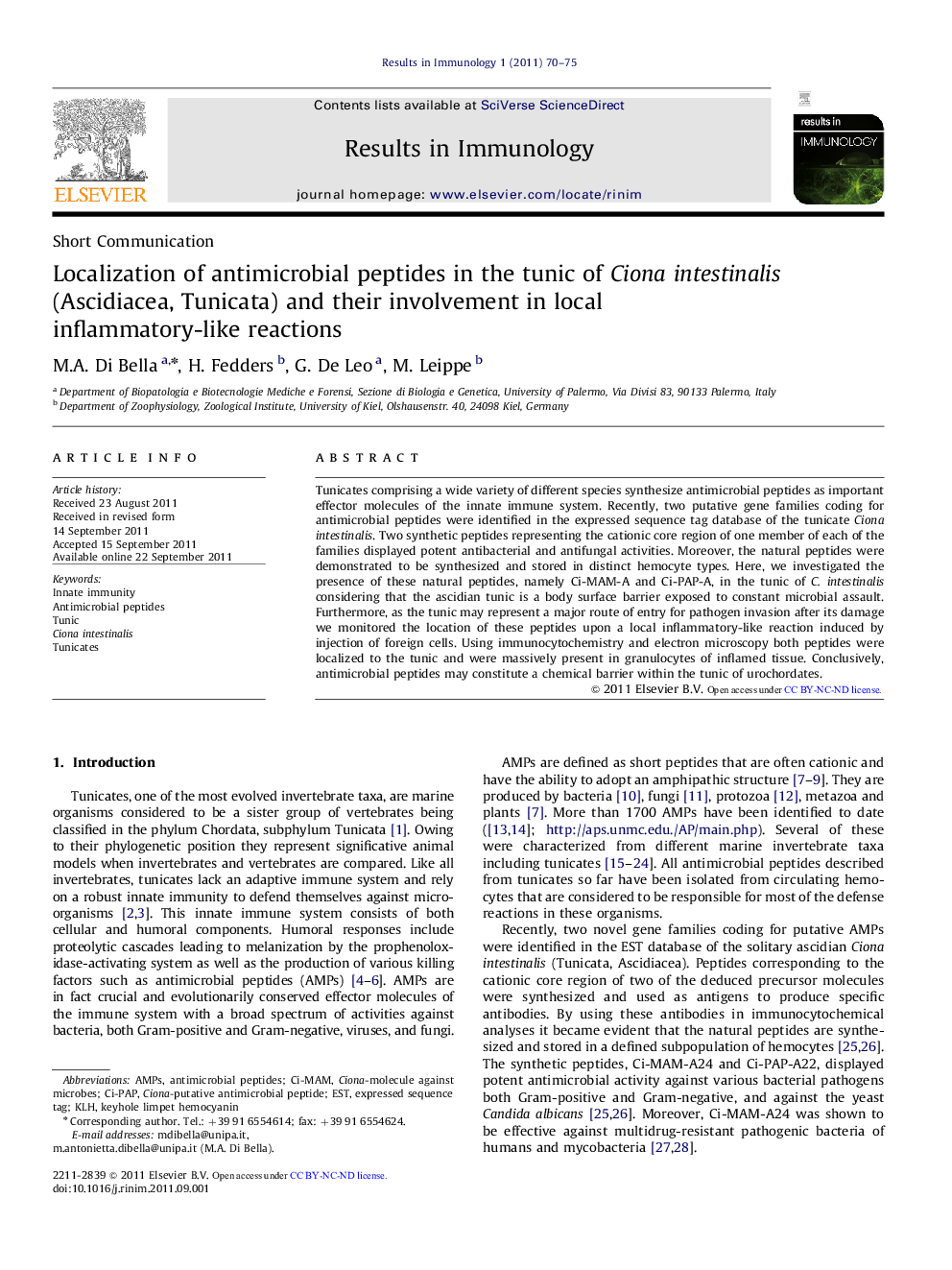| Article ID | Journal | Published Year | Pages | File Type |
|---|---|---|---|---|
| 2202411 | Results in Immunology | 2011 | 6 Pages |
Tunicates comprising a wide variety of different species synthesize antimicrobial peptides as important effector molecules of the innate immune system. Recently, two putative gene families coding for antimicrobial peptides were identified in the expressed sequence tag database of the tunicate Ciona intestinalis. Two synthetic peptides representing the cationic core region of one member of each of the families displayed potent antibacterial and antifungal activities. Moreover, the natural peptides were demonstrated to be synthesized and stored in distinct hemocyte types. Here, we investigated the presence of these natural peptides, namely Ci-MAM-A and Ci-PAP-A, in the tunic of C. intestinalis considering that the ascidian tunic is a body surface barrier exposed to constant microbial assault. Furthermore, as the tunic may represent a major route of entry for pathogen invasion after its damage we monitored the location of these peptides upon a local inflammatory-like reaction induced by injection of foreign cells. Using immunocytochemistry and electron microscopy both peptides were localized to the tunic and were massively present in granulocytes of inflamed tissue. Conclusively, antimicrobial peptides may constitute a chemical barrier within the tunic of urochordates.
